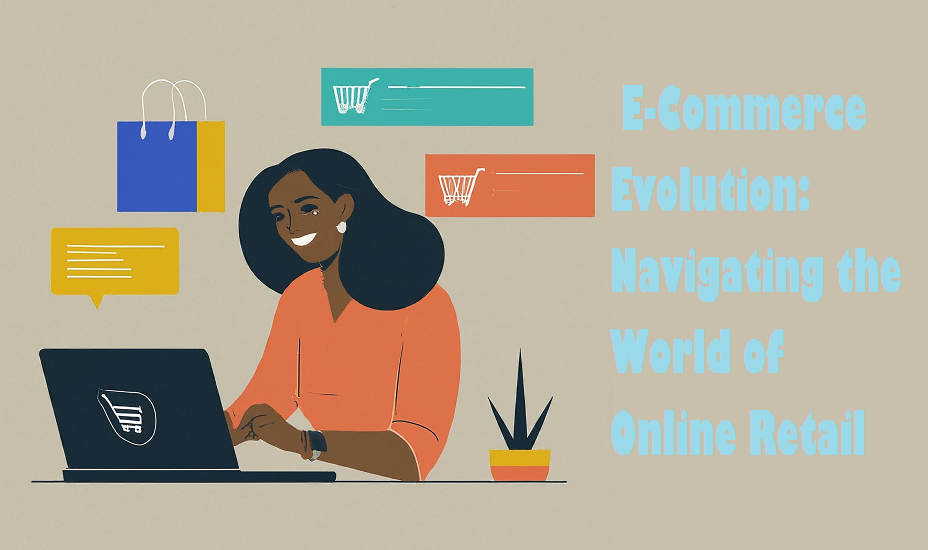Table of Contents
E-commerce, short for electronic commerce, has completely transformed the way businesses operate and consumers shop. From its humble beginnings to its current status as a trillion-dollar industry, the evolution of e-commerce has been nothing short of remarkable.
Historical Evolution of E-Commerce
Early Beginnings
E-commerce traces its roots back to the 1960s with the advent of electronic data interchange (EDI), which allowed businesses to exchange documents electronically. However, it wasn’t until the 1990s with the emergence of the internet that e-commerce truly took off.
Dot-com Bubble and Bust
The late 1990s saw the dot-com boom, characterized by a frenzy of internet-based startups and skyrocketing stock prices. However, this euphoria was short-lived, and the dot-com bubble burst in the early 2000s, leading to the collapse of many e-commerce companies.
Rise of E-Commerce Giants
Despite the dot-com crash, e-commerce continued to grow steadily, fueled by advancements in technology and changing consumer preferences. Companies like Amazon, eBay, and Alibaba emerged as industry giants, reshaping the retail landscape and dominating online sales.
Key Drivers of E-Commerce Evolution
Advancements in Technology
Technological innovations such as mobile devices, artificial intelligence, and augmented reality have revolutionized the e-commerce experience, making it easier and more convenient for consumers to shop online.
Changing Consumer Behavior
The rise of digital natives and millennials has led to a shift in consumer behavior, with more people preferring the convenience of online shopping over traditional brick-and-mortar stores.
Globalization and Connectivity
The internet has transcended geographical boundaries, allowing businesses to reach customers worldwide and tap into new markets with ease.
Trends Shaping the Future of E-Commerce
Mobile Commerce (M-Commerce)
With the proliferation of smartphones and mobile apps, m-commerce has become increasingly popular, enabling consumers to shop anytime, anywhere, directly from their mobile devices.
Personalization and Customer Experience
E-commerce platforms are leveraging data analytics and machine learning to personalize the shopping experience, providing tailored recommendations and targeted marketing campaigns to enhance customer satisfaction.
Sustainability and Ethical Consumption
As awareness of environmental and social issues grows, consumers are gravitating towards brands that prioritize sustainability and ethical practices, driving demand for eco-friendly and ethically sourced products.
Challenges and Opportunities in Online Retail
Competition and Market Saturation
The e-commerce landscape is highly competitive, with thousands of online retailers vying for consumers’ attention. Standing out in a crowded market requires innovative strategies and a deep understanding of consumer preferences.
Security and Privacy Concerns
Data breaches and cyber-attacks pose significant risks to e-commerce businesses, eroding consumer trust and damaging brand reputation. Implementing robust security measures and ensuring compliance with data protection regulations is crucial for safeguarding sensitive information.
Emerging Markets and Untapped Potential
While e-commerce has experienced rapid growth in mature markets, there is still vast untapped potential in emerging economies. Expanding into new markets requires a nuanced understanding of local customs, preferences, and regulatory frameworks.
Strategies for Success in E-Commerce
Omnichannel Retailing
Brands are adopting omnichannel strategies to provide a seamless shopping experience across multiple channels, including online stores, mobile apps, social media platforms, and physical retail locations.
Data Analytics and Insights
Harnessing the power of data analytics allows e-commerce companies to gain valuable insights into consumer behavior, market trends, and performance metrics, enabling them to make informed business decisions and optimize their strategies.
Agile and Adaptive Business Models
In a rapidly evolving e-commerce landscape, agility and adaptability are essential for staying ahead of the competition. Embracing a culture of innovation and experimentation allows businesses to pivot quickly in response to changing market dynamics and consumer demands.
Conclusion
The evolution of e-commerce has been driven by technological advancements, shifting consumer preferences, and globalization. As the industry continues to evolve, businesses must stay agile, innovative, and customer-centric to thrive in an increasingly competitive landscape.
FAQs (Frequently Asked Questions)
- What is e-commerce?
- E-commerce, also known as electronic commerce, is the practice of purchasing and selling items and services through online platforms.
- How has mobile commerce impacted online retail?
- Mobile commerce, or m-commerce, has completely transformed the way consumers shop by enabling them to make purchases directly from their smartphones or tablets.
- What are some challenges facing e-commerce businesses?
- E-commerce businesses face challenges such as competition, security risks, and the need to adapt to changing consumer trends.
- Why is personalization important in e-commerce?
- Personalization allows e-commerce platforms to tailor the shopping experience to each individual user, increasing customer satisfaction and loyalty.
- How can businesses succeed in e-commerce?
- Businesses can succeed in e-commerce by adopting omnichannel strategies, leveraging data analytics, and remaining agile and adaptive in a dynamic market environment.






